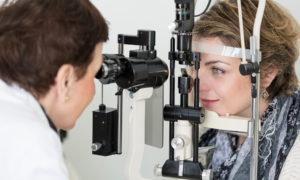
Sept. 28, 2016
A call to action to change the state of eye health and vision care is being publicized in the new report, “Making Eye Health a Population Health Imperative: Vision for Tomorrow,” released by the National Academies of Sciences, Engineering, and Medicine (National Academies) and sponsored in part by the American Optometric Association (AOA).
“The National Academies’ report is an expression of the vision health improvements that family eye doctors and our community partners have worked tirelessly to achieve, and it shines a crucial spotlight on eye and vision health issues and the need to responsibly address them,” says Andrea P. Thau, OD, president of the AOA. “With today’s technology and tools, along with the strongest-ever collection of doctors of optometry, we are already putting these recommendations to work to deliver quality, evidence-based care and ensure that everyone has access to in-person comprehensive eye examinations and needed clinical eyecare.”
“Making Eye Health a Population Imperative” outlines a public health approach made up of five foundational strategies, supported by nine specific recommended stakeholder actions to accomplish those goals.
Facilitate public awareness through timely access to accurate and locally relevant information
Recommendations: U.S. Department of Health and Human Services (HHS)-led public health call to action and awareness campaign.
Generate evidence to guide policy decisions and evidence-based actions
Recommendations: Centers for Disease Control and Prevention (CDC)-coordinated surveillance system; and HHS-led interagency workgroup to develop a common research agenda.
Expand access to appropriate clinical care
Recommendations: HHS-convened interdisciplinary panels to develop a single set of evidence-based clinical and rehabilitation practice guidelines; and eye health profession-led education programs to proactively recruit and educate a diverse workforce and incorporate prevention and detection of visual impairments, population health, and team care coordination as part of core competencies.
Enhance public health capacities to support vision-related activities
Recommendations: State and local public health departments’ partnership with health care systems to align public health and clinical practice objectives, programs, and strategies about eye and vision health to eliminate barriers and increase access to clinical eyecare, especially comprehensive eye examinations; and CDC prioritization and expansion of its vision grant program to build state and local public health capacity.
Promote community actions that encourage eye- and vision-healthy environments
Recommendation: Community collaboration with state and local health departments and Cabinet Level Agencies, Independent Federal Agencies and the Office of the White House to translate a broad national agenda to promote eye and vision health into actions that encourage policies and conditions that improve eye and vision health and foster environments to minimize the impact of vision impairment.
“We set out to design actionable, achievable recommendations that would set out a clear plan for the future of vision health,” says Lori Grover, O.D., Ph.D., National Academies panel member, AOA Evidence-Based Optometry Committee member and senior vice-president for health policy at King Devick Test, Inc. “The direction and recommendations, if concertedly acted upon in educational and health policy arenas and in a clinically reasonable manner, would effectuate long-term and sustainable reduction in preventable vision impairment and its impacts, improving population health outcomes.”
For more information, updates and access to the report, visit http://www.aoa.org/news/advocacy/preventable-vision-loss-unacceptable.



























